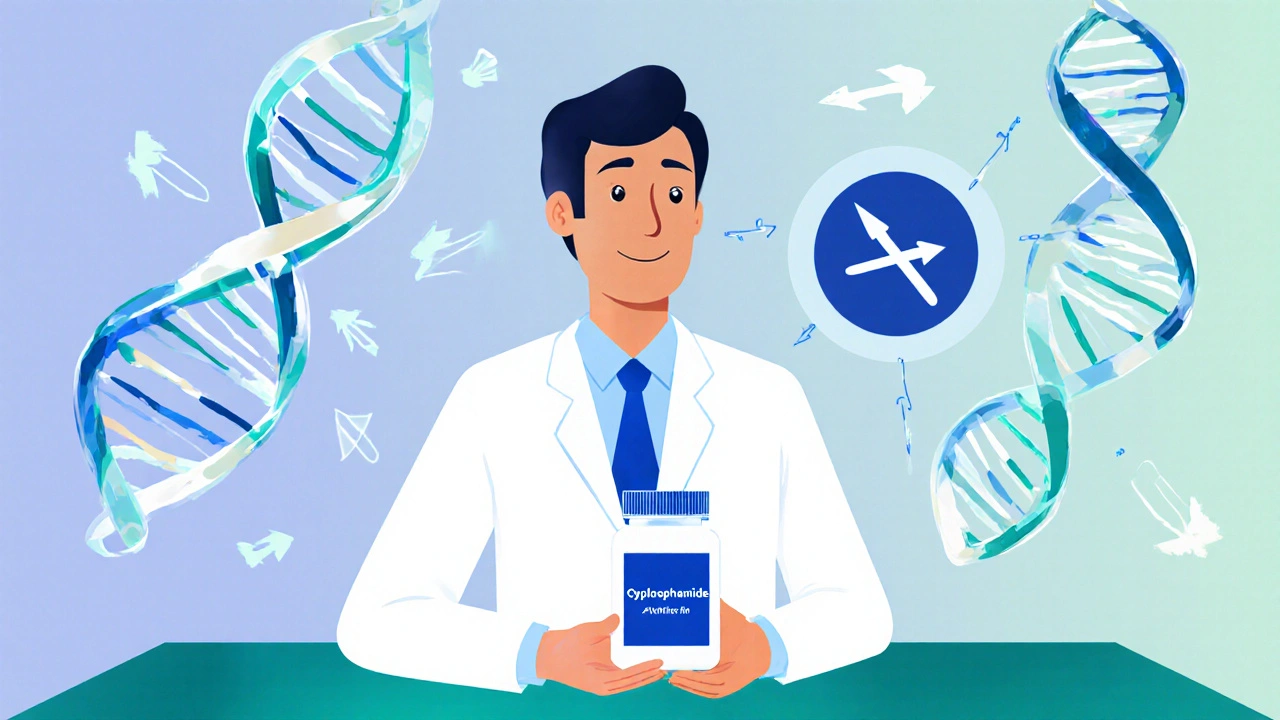When working with Cyclophosphamide, an alkylating agent used as both a chemotherapy and an immunosuppressant. Also known as Cytoxan, it interferes with DNA replication in rapidly dividing cells and modulates abnormal immune responses. This dual action makes it a staple in treating cancers such as lymphoma and breast cancer, as well as autoimmune disorders like systemic lupus erythematosus.
Understanding Chemotherapy, the use of drugs to kill or stop the growth of cancer cells helps you see where Cyclophosphamide fits in a broader treatment plan. It’s often combined with other agents to boost efficacy, a strategy known as combination therapy. Immunosuppression, the intentional dampening of the immune system is another critical angle; doctors prescribe Cyclophosphamide for severe autoimmune flare-ups because it curbs overactive immune cells. Finally, be aware of Bladder Toxicity, a known side effect where the drug irritates the urinary tract. Hydration and mesna (a protective agent) are standard measures to prevent this complication.
Cyclophosphamide encompasses several treatment contexts. In oncology, it requires precise dosing based on body surface area, renal function, and concurrent medications. The drug influences the immune system by reducing B‑cell and T‑cell counts, which is why monitoring blood counts is a routine part of therapy. For autoimmune diseases, the goal shifts from killing tumor cells to resetting immune balance, so physicians may use lower, intermittent doses. Recent studies show that cyclophosphamide pulses can achieve remission in vasculitis without the long‑term toxicity seen in continuous dosing.
Practical tips matter as much as the science. Always stay well‑hydrated—aim for at least 2‑3 liters of fluid per day during treatment days—to flush the drug through the kidneys. If you’re prescribed mesna, follow the schedule exactly; missed doses raise the risk of hemorrhagic cystitis. Watch for early warning signs: painful urination, blood in urine, or unexplained fever. Report these symptoms promptly, as early intervention can prevent serious complications.
Managing side effects also includes supporting blood counts. Growth factor injections (like G‑CSF) can shorten neutropenia periods, and erythropoietin may help with anemia if it becomes severe. Nutrition plays a subtle role—adequate protein and vitamins support marrow recovery. If you’re dealing with nausea, a combination of anti‑emetics (e.g., ondansetron plus dexamethasone) often works better than a single agent.
Drug interactions are another piece of the puzzle. Cyclophosphamide is metabolized by the liver enzyme CYP3A4, so strong inhibitors (like ketoconazole) can raise drug levels, increasing toxicity. Conversely, inducers (such as rifampin) may lower effectiveness. Always give your healthcare team a full list of prescription and over‑the‑counter meds, including herbal supplements.
Looking ahead, research is exploring ways to deliver Cyclophosphamide more precisely, such as liposomal formulations that target tumors while sparing healthy tissue. Early trials suggest fewer side effects and comparable efficacy, but these options are still emerging.
Below you’ll find a curated collection of articles that dive deeper into each of these areas—dosing strategies, side‑effect management, patient experiences, and the latest research developments. Whether you’re starting a treatment cycle, managing long‑term therapy, or simply want to understand how Cyclophosphamide works, these resources give you practical, up‑to‑date insights to help you navigate your health journey.

A detailed comparison of Cyclophosphamide (Cytoxan) with top alternative chemotherapy and immunosuppressive drugs, covering uses, side‑effects, costs, and when to choose each.
read more